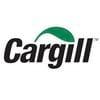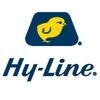Explore all the information on
Poultry nutrition - Other additives
Alternative feed additives have promising importance in broiler production due to the ban on the use of certain antibiotics. The most used antibiotic alternatives in broiler production are phytogenics, organic acids, prebiotics, probiotics, enzymes, and their derivatives. Antibiotic alternatives have been reported to increase feed intake, stimulate digestion, improve feed efficiency, increase growth performance, and reduce the incidence of diseases by modulating the intestinal microbiota and immune system, inhibiting pathogens, and improving intestinal integrity. Simply, the gut microbiota is the target to raise the health benefits and growth-promoting effects of feed additives on broilers. Therefore, naturally available feed additives are promising antibiotic alternatives for broilers.
PhD Maria Tereza Terra-Long (North America Technical Services Manager - Poultry, Phileo by Lesaffre), explains how using these probiotics might save money for farmers who raise chickens.
...
Comments : 0
Recommendations: 3
Julián Melo (Universidad Nacional de Luján / Dietaxion) In a context of rising prices of feed ingredients, the improvement of the overall feed digestibility and maximum utilization of nutrients in the feedstuffs should be a priority. Previous studies have shown the benefit of a double-buffered sodium butyrate (DBSB) on the performance and intestinal health of broilers fed low energy and protein diets (LEP). The aim of the study was to...
Comments : 0
Recommendations: 2
Cristiano Bortoluzzi (dsm-firmenich) The objective of the present studies was to evaluate: (1) the impact of the supplementation with a Precision Biotic (PB) on the modulation of the cecal microbiome collected from broiler chickens submitted to a necrotic enteritis challenge model (Experiment 1); (2) to measure the cecal production of shorth-chain fatty acids (SCFA; Exp. 2). In Exp. 1, day-old chicks were placed on a completely randomized block design...
Comments : 0
Recommendations: 1
Julián Melo (Universidad Nacional de Luján / Dietaxion) explains the characteristics and benefits of a double-buffered sodium butyrate presented in his research, during this interview at IPPE in Atlanta, USA....
Comments : 0
Recommendations: 0
Megan Koppen (Cargill) explains how phytogenic feed additives can boost performance and get better return of investment on older broilers, in this interview during IPPE 2024 in Atlanta, USA....
Comments : 0
Recommendations: 0
Megan Koppen (Cargill) talks about Yucca and Quillaja saponins and their impact on performance and ammonia emissions in broilers, in this interview during IPPE 2024 in Atlanta, USA....
Comments : 0
Recommendations: 0
Cristiano Bortoluzzi (dsm-firmenich) discusses short-chain fatty acids, butyrate and propionate from his research on microbiome modulation through a precision biotic, in this interview during IPPE 2024 in Atlanta, USA....
Comments : 0
Recommendations: 0
Héctor Leyva-Jiménez (United Animal Health) talks about a technology to process pathogen profiles to identify coinfections and help make better decisions on the farm, in this interview during IPPE 2024 in Atlanta, USA....
Comments : 0
Recommendations: 0
Over the past decades, genetic improvements have stimulated broiler production resulting in birds weighing ± 3kg in 42 d. To reach this genetic potential, the absorption and digestion of nutrients and according morphological and functional development of the small intestine in the early life must be impeccable. Before hatch, uptake of nutrients by the chicken embryo is limited but rapid increase in villus length and formation of intestinal crypts, have been reported close to hatch and...
Comments : 2
Recommendations: 3
I. INTRODUCTION In the 1990s, researchers from the American Soybean Association (ASA) showed that soybean meal with similar proximate analysis can perform very differently in poultry and swine feeding. Subsequently, Creswell and Swick (2008) carried out feeding trials, AME and digestible amino acid analysis of 4 soybean meals. They found that there was a large difference between the soybean meals in BWG and FCR from the broiler feeding trials as well as in AME and digestible lysine....
Comments : 1
Recommendations: 4
CHOLINE Choline, a B-complex vitamin also known as vitamin B4, has been revived as a requisite “feed additive” in poultry. Choline is a lipotropic factor that helps in the mobilization of fat and prevents fatty degeneration. Apart from this, also play many important roles in the body of the birds. The metabolic needs for Choline are supplemented in 2 ways: 1. Dietary Choline 2. Choline synthesis in animals Although choline can be...
Comments : 0
Recommendations: 0
Actisaf® Sc 47 HR+, which is a successful and valuable probiotic is now being released for use by the poultry industry. Hear What Dr. Alain Riggi from Phileo by Lesaffre has to say about it...
Comments : 1
Recommendations: 1
I. INTRODUCTION Feeding the world’s projected burgeoning human population increase of 2.2 billion people by 2050 will place tremendous pressure on food security. The poultry industry is innovative and well positioned to address this problem through increased efficiency and waste reduction. Globally, 32% (by weight) of produced food − equivalent to 1.3 billion tons − is lost or wasted every year. Conversion of food waste into raw materials for production of poultry...
Comments : 0
Recommendations: 0
I. INTRODUCTION Modern broilers grow quickly because they have tremendous genetic potential due to intensive selection for increased growth rate and efficiency (Zuidhof et al., 2014). The parents, broiler breeders, carry this genetic potential and when fed ad libitum, easily become overweight (Heck et al., 2004), compromising reproductive performance (Renema and Robinson, 2004; Chen et al., 2006) and reducing welfare (Mench, 2002). Thus, broiler breeder hens are typically feed...
Comments : 0
Recommendations: 0
Theresia Lavergne (Natural Biologics) talks about the gut microbiome and research on modulation with a postbiotic feed additive, during the 11th Symposium on Gut Health in Production of Food Animals in St. Louis, USA....
Comments : 1
Recommendations: 3
The International Production & Processing Expo (IPPE) offers attendees access to the latest in protein and feed technology through exhibits and educational programing. TECHTalks are free, 20-minute technical presentations, offered each day at IPPE. For the 2024 IPPE, 97 presentations will be given in the TECHTalks theaters in the A-Hall at Booth A244, in the B-Hall at Booth B48027 and in the C-Hall at Booth C14185.
The TECHTalks presentations will address many topics, including...
Comments : 0
Recommendations: 0
Dr. Markus Wiltafsky-Martin (Evonik) talks about the impactful benefits of implementing AMINONIR®, revolutionizing nutritional analysis: Gain insights into its practical application, from sample collection to comprehensive reports, catering to diverse analytical requirements and ensuring precise, actionable data for informed decision-making.
...
Comments : 0
Recommendations: 3
"Listen to Dr. Markus Wiltafsky-Martin as he discusses the recent USA patent validating the scientific advancements of AMINONIR® RED and its unwavering accuracy in providing reliable nutritional data...
Comments : 0
Recommendations: 2
AMINONIR® delivers swift nutritional insights, aiding stakeholders in the livestock feed chain. Its rapid analysis ensures timely, informed decisions, optimizing efficiency and nutritional precision. Hear what Dr. Markus Wiltafsky-Martin from Evonik has to say about it...
Comments : 0
Recommendations: 2
Dr. Markus Wiltafsky-Martin, Director of Service Commercialization at Evonik Animal Nutrition, explains what NIR is, how it operates, and demonstrates how AMINONIR® swiftly and accurately determines the nutritional quality of your feeds and raw materials – ensuring fast, reliable results of the highest quality.
...
Comments : 0
Recommendations: 4



.jpg&w=3840&q=75)



.jpg&w=3840&q=75)





.jpg&w=3840&q=75)











.jpg&w=3840&q=75)










